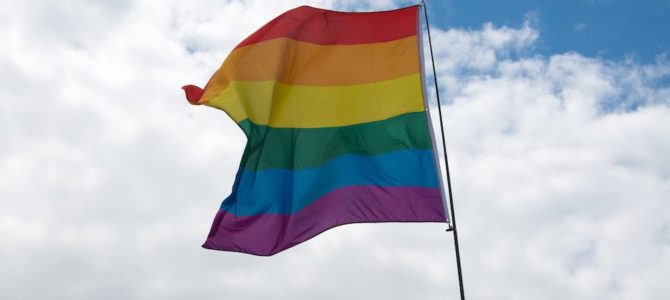When discussing transgender issues, legislation, and other controversies, it is common to see the statistic that 40 percent of transgender people have considered or attempted suicide. Where does this number come from, and how reliable is it in determining the moral and ethical consequences of transgender-related policies?
While appearing on “The View,” Secretary of Transportation Pete Buttigieg was asked by Ana Navarro if he agreed with Chasten Buttigieg that the passage of the artificially controversial Florida bill HB 1557, Parental Rights in Education, would “kill kids.” Without hesitation, he agreed with the assertion.
Chasten Buttigieg had absurdly slammed the corporate media-labeled “Don’t Say Gay” law on Twitter, stating, “This will kill kids, @RonDeSantisFL. You are purposefully making your state a harder place for LGBTQ kids to survive in. In a national survey (@TrevorProject), 42% of LGBTQ youth seriously considered attempting suicide last year. Now they can’t talk to their teachers?”
This argument has been echoed frequently in the discussion about the Florida law, which essentially addresses parental involvement in their children’s academic lives and prevents advanced education on sexuality and gender theory from being taught to children younger than age 10.
These Transgender Suicide Surveys Are Trash
However, of the two major studies on transgender suicide repeatedly cited in the media as settled fact, neither surveyed children of the age affected by the Florida bill, nor are they validated by other objective studies.
Chasten Buttigieg cited The Trevor Project, an LGBT group founded to address LGBT youth suicides. It released a 2021 survey targeting LGBT volunteers aged 13 to 24, with 35,000 respondents.
The primary takeaway from the survey states, “42% of LGBTQ youth seriously considered attempting suicide in the past year, including more than half of transgender and nonbinary youth.” The survey concluded that LGBT youth who received accommodation, recognition, or “safe spaces” that reflected their preferred identity were less likely to have attempted suicide, despite 72 percent expressing anxiety disorders and 62 percent having major depression disorder.
In a similar study, the 2011 U.S. Transgender Survey conducted by the National Center for Transgender Equality, 40 percent of transgender respondents said they had attempted suicide. The survey was done through online and paper forms. It compiled the self-reporting of 6,450 transgender and gender non-conforming study participants older than 18.
The suicide attempt rate was recorded as 41 percent among all respondents, with variations depending on circumstances and questioning. “Those who expressed a transgender identity or gender non-conformity while in grades K-12 reported alarming rates of harassment (78%), physical assault (35%) and sexual violence (12%),” the survey found. Three-quarters (76%) of those who were assaulted by teachers or staff reported having attempted suicide.
These numbers have driven the LGBT left’s argument that “Anti-LGBT” legislation nationwide is harming LGBT youth. One important statistic from the Trevor Project survey shows us that 94 percent of LGBT youth reported politics significantly and negatively affects their mental health.
However, as with all self-reported data, consideration must be taken into account for bias and exaggeration. For example, the above survey also notes that “67% of Black LGBTQ youth and 60% of Asian/Pacific Islander LGBTQ youth” claim to have experienced discrimination based on their race in the past year.
No Evidence Limiting Sex Ed Increases Suicide
Understanding suicide attempts is complex. In the United States in 2017, according to the Agency for Healthcare and Quality, there were 1.5 million recorded Emergency Department visits due to suicidality or attempts. Of that number, 33 percent were people between the ages of 5 and 24. Of this, 10,880 children aged 5 to 9 were included. Children 10 to 14 made up 102,808 cases and children 15 to 19 were 207,915.
The Centers for Disease Control, utilizing death certificate analysis, indicates that nationwide, between 4,000 and 7,000 Americans aged 10 to 24 commit suicide annually, with the lowest number counted in 2000 and steadily rising up through 2018.
The truth is, we simply cannot say what does and does not “cause” suicide in youth and we can only speculate based on the self-reports of anonymous survey takers, assuming their reports are accurate. What we can determine, however, is that there is no objective evidence to suggest increasing parental involvement in schools and restricting advanced adult education on sexuality causes distress or suicidality, certainly not in children under the age of 10.
LGBT Activism Reduces Family Support
In fact, the self-reported data indicates that parents who are highly involved in their child’s personal and academic lives positively influence children’s anxiety and depression. While the Trevor Project focuses on affirmation of gender identity, pronouns, name changes, etc., what it is really measuring is the child’s feeling of being loved and accepted by his or her family. Ironically, it is likely LGBT activists’ typical actions, reporting, secretive and exclusive affirmation models, and suspicion of parents causes the most harm.
For example, the Trevor Project asks children as young as 13 if they have attempted suicide during various time periods, but does not contact authorities or obtain parental consent in any way. The child simply takes the survey online by himself.
Of the Florida law’s requirement that schools not hide a child’s gender confusion from their parents, Rep. Carlos G. Smith, the first Latino LGBT legislator in Florida, said of the Parental Rights bill, “An amendment was just filed by the sponsor of #DontSayGay to make it even more dangerous for vulnerable kids with a STATE-MANDATED outing of LGBTQ students to parents, specifically in cases of abuse, abandonment + neglect. This will have devastating consequences for our youth.” Chasten Buttigieg referred to this aspect of the law as “cruel.”
The current model of LGBT advocacy for minors is to ensure they are kept as far away from their families as possible, expressing their “true selves” in “safe spaces” at school and with adults other than their parents. The mere mentioning of requiring educators to inform parents of a child’s mental distress, changes in behavior, or other important factors is considered “dangerous.” Where the new law requires schools to keep open communication with parents about their children to catch concerns early on, the LGBT left wishes to keep parents in the dark as long as possible until the child is properly educated on his sexuality or gender identity.
The threat of suicide or self-harm should be removed from our political discussions entirely. It is inherently flawed, malicious, and self-serving.
Using children as a political weapon is far, far worse. The best situation for a child is to be cared for by his or her parents, who have an absolute right to know everything that goes on in their child’s life. Efforts to hide children from their parents under the guise of a greater goal is misguided and should be aggressively opposed. In these conversations, the tragedy of suicide should not be so simplified, politicized, and weaponized.









